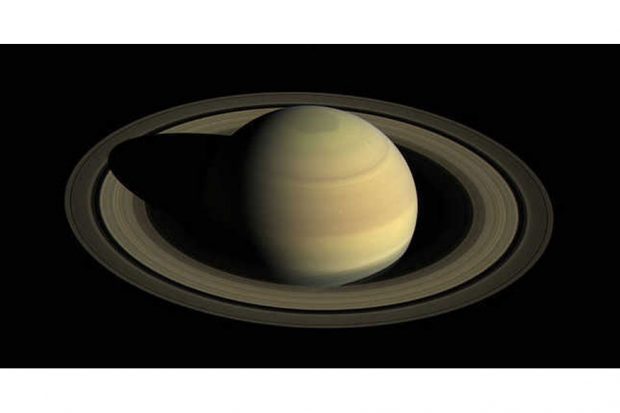
Saturn’s moon Titan has 100-m deep methane lakes: NASA
Team Udayavani, Apr 17, 2019, 12:47 PM IST

Washington: Saturn’s largest moon Titan has small liquid lakes that run more than 100 metres deep, perched atop hills and filled with methane, scientists have found using data from NASA’s Cassini spacecraft.
The findings, published in the journal Nature Astronomy, are the first confirmation of just how deep some of Titan’s lakes are (more than 300 feet, or 100 meters) and of their composition.
They provide new information about the way liquid methane rains on, evaporates from and seeps into Titan — the only planetary body in our solar system other than Earth known to have stable liquid on its surface.
Scientists have known that Titan’s hydrologic cycle works similarly to Earth’s — with one major difference. Instead of water evaporating from seas, forming clouds and rain, Titan does it all with methane and ethane.
We tend to think of these hydrocarbons as a gas on Earth, unless they’re pressurised in a tank. However, Titan is so cold that they behave as liquids, like gasoline at room temperature on our planet.
Scientists have known that the much larger northern seas are filled with methane, but finding the smaller northern lakes filled mostly with methane was a surprise.
Previously, Cassini data measured Ontario Lacus, the only major lake in Titan’s southern hemisphere. There they found a roughly equal mix of methane and ethane. Ethane is slightly heavier than methane, with more carbon and hydrogen atoms in its makeup.
“Every time we make discoveries on Titan, Titan becomes more and more mysterious,” said Marco Mastrogiuseppe, Cassini radar scientist at California Institute of Technology in the US.
“But these new measurements help give an answer to a few key questions. We can actually now better understand the hydrology of Titan,” Mastrogiuseppe said in a statement.
Adding to the oddities of Titan, with its Earth-like features carved by exotic materials, is the fact that the hydrology on one side of the northern hemisphere is completely different than the that of other side, said Cassini scientist Jonathan Lunine of Cornell University in the US.
“It is as if you looked down on the Earth’s North Pole and could see that North America had completely different geologic setting for bodies of liquid than Asia does,” Lunine said.
On the eastern side of Titan, there are big seas with low elevation, canyons and islands. On the western side: small lakes. And the new measurements show the lakes perched atop big hills and plateaus.
The new radar measurements confirm earlier findings that the lakes are far above sea level, but they conjure a new image of landforms — like mesas or buttes — sticking hundreds of feet above the surrounding landscape, with deep liquid lakes on top.
The fact that these western lakes are small — just tens of miles across — but very deep also tells scientists something new about their geology: It’s the best evidence yet that they likely formed when the surrounding bedrock of ice and solid organics chemically dissolved and collapsed.
On Earth, similar water lakes are known as karstic lakes. Occurring in in areas like Germany, Croatia and the US, they form when water dissolves limestone bedrock.
The research also helped unravel more of the mystery of Titan’s hydrologic cycle. Researchers used Cassini data to reveal what they call transient lakes. Different sets of observations — from radar and infrared data — seem to show liquid levels significantly changed.
Cassini, which arrived in the Saturn system in 2004 and ended its mission in 2017 by deliberately plunging into Saturn’s atmosphere, mapped more than 1.6 million square kilometers of liquid lakes and seas on Titan’s surface.
Udayavani is now on Telegram. Click here to join our channel and stay updated with the latest news.
Top News

Related Articles More

BTS2024: If India can make rocket sensors, it can also make car sensors, says ISRO chief Somanath

World COPD Day: Know your lung function

SpaceX successfully launches ISRO’s 4,700 kg communication satellite from US

As AI and megaplatforms take over, the hyperlinks that built the web may face extinction

Plastic waste could double by 2050, researchers find, suggest policies to address issue
MUST WATCH
Latest Additions

MSEZ partners with Italy’s MIR Group for Rs 1,500 cr green facility

Ullal: 70-year-old man allegedly rapes minor girl

Air pollution: SC flags Delhi govt’s failure to implement GRAP-4 curbs on entry of trucks

Drugs worth Rs 6 crore seized in Bengaluru, five arrested

Siddaramaiah urges Nirmala Sitharaman to address NABARD’s loan cuts to farmers
Thanks for visiting Udayavani
You seem to have an Ad Blocker on.
To continue reading, please turn it off or whitelist Udayavani.




















